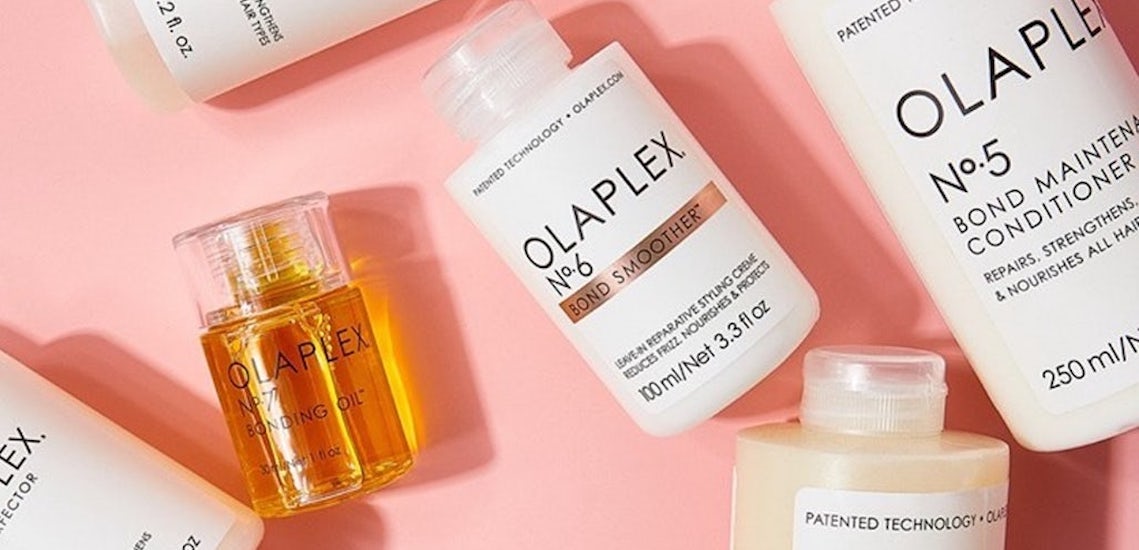Today, Olaplex held its fourth-quarter and year-end 2022 results, indicating that previous troubles for Olaplex continue to weigh on the bond-building hair-care brand.
Net sales for the year increased 17.7% to $704.3 million compared to 2021, however, the fourth quarter saw net sales decline 21.5% to $130.7 million year-over-year. Olaplex maintains three sales channels: professional, specialty retail and DTC e-commerce. While 2022 sales per channel increased between 3-33.9% compared to 2021, the fourth quarter saw a decline of 3.9-45.3%. Specialty retail, which includes Sephora and Ulta Beauty, was particularly hit hard, at 45.3%. Olaplex’s decline began in the third quarter, which executives owed to headwinds like increased competition, macroeconomic concerns and partner retailers carrying too much product. Olaplex revised its 2022 full-year earnings in Oct. 2022, which caused a steep drop in its stock price by about 40% at the time.
JuE Wong, CEO of Olaplex, was conciliatory on the call, stating there are four key areas where the company needs to invest more and strengthen. The first is investing in brand awareness and defending the brand within a competitive category. Wong conceded that having Charlotte Watson, CMO of Olaplex, in place sooner than Jan. 2022 would have been beneficial. Secondly, with a growing assortment of 11 products, more stylist and consumer education is needed. Third, the company needs additional marketing and educational support for retail partners and salons. And fourth, it needs to move faster to handle the type of negative social media and press that have arisen in the last year. Glossy previously reported on such negative public commentary and misnomers about the brand’s products. In addition, Olaplex was faced with a lawsuit in February where 30 women are claiming Olaplex products caused hair loss. Olaplex has vehemently refuted these claims and plans to be aggressive in its response, according to Wong.
“[Our earnings] represent a combination of a lot of things that come together; beauty is resilient, but not immune,” said Wong in an interview with Glossy. “Don’t get me wrong, we cannot defend ourselves; these results are disappointing. In order for us to be able to prove that we’ve learned our lesson, [we need] to rise above it all and take control over what we can and do it well.”
She reiterated that consumers are price sensitive and are now extending the length between their salon visits. What’s more, specialty retail has also adjusted to lower inventory levels, compared to during the height of Covid-19. And prestige beauty has felt a setback lately, with Estée Lauder Companies reporting net sales of $4.62 billion for its second quarter of fiscal year 2023, a decline of 17% from $5.54 billion year-over-year. However, prestige hair care has fared well, growing by 18% in the U.S. in the fourth quarter of 2022, according to NPD Group. Olaplex’s 2023 earnings guidance expects a further 15% decline in net sales, to between $563 million and $634 million.
“We have not seen evidence of tradeout of the prestige hair category, and as such, it seems that the slowdown is specific to Olaplex — even after accounting for its base comparisons from entering Ulta Beauty last year. It seems that some of the consumer cohorts are not driving the same repeat as before,” wrote Andrea Teixeira, an analyst at J.P. Morgan in her recent analyst notes. Olaplex expanded to Ulta Beauty in Jan. 2022.
Olaplex’s priorities are tied directly to addressing the aforementioned opportunities. They include upping investments in sales and marketing, increasing and improving educational assets, re-asserting its leading position with professional and retail partners, and improving its approach to PR. In 2023, Olaplex expects its marketing costs, inclusive of sampling, sales and marketing payroll, to increase to $70 million from $40 million in 2022. Such marketing efforts will follow themes of further establishing brand authority and credibility in bond-building. The brand will also invest in “high ROI activities,” said Wong, including digital community engagement, performance marketing and visual merchandising activities. Additionally, Olaplex will increase sampling from approximately 6 million samples in 2022 to roughly 10 million samples in 2023. Wong said sales conversion rates from sampling are in the 30-40% range.
In addition to enhancing visual merchandising, adding more digital education programs, and deploying targeted CRM and loyalty programs, Olaplex is rolling out a third-party sales team trained by Olaplex to Sephora and Ulta Beauty doors. Olaplex piloted this sales-team approach during the fourth quarter in about 75 doors and will expand to 400 stores nationwide in 2023.
Positive moments on the call included the reporting of positive sales performance of Olaplex’s dry shampoo, which launched at the end of January as the brand’s first styling product. Wong declined on the call to break out the sales of the shampoo, but said it is the No. 1 best-selling dry shampoo across all the channels where it has launched, including Sephora. The dry shampoo features Olaplex’s bond-building technology, as well as scalp-clarifying ingredients. Olaplex plans to launch 2-3 products every year, and styling offers a whitespace for the brand, which already sells pre-shower, shower and leave-in treatments.
“We are looking at styling categories, because consumers are now going back into the world, and they are styling their hair. Therefore, they also want treatment with their styling products,” said Wong.




